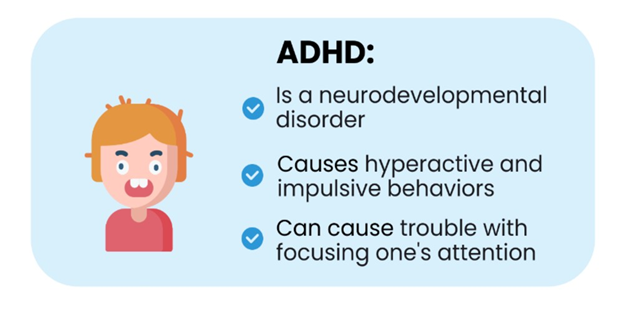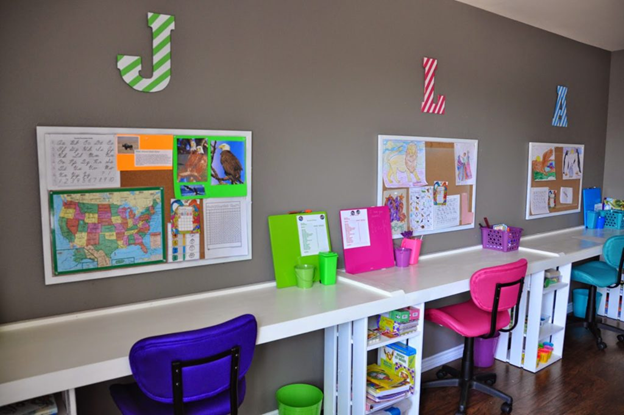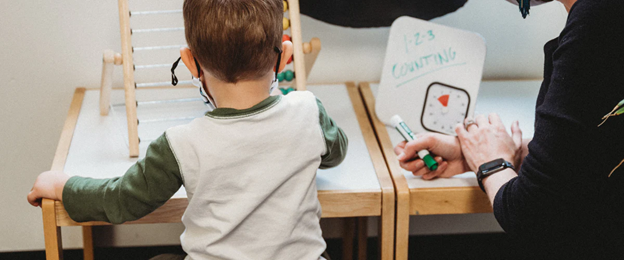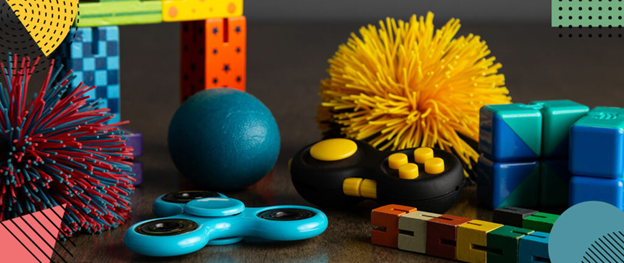Helping a child with ADHD build effective study habits isn’t about forcing structure. It’s about creating systems that work with their brain—not against it. We’ve seen firsthand how the right strategies, patience, and environment can transform frustration into focus and stress into success.

If you’re a parent looking for ways to support your child with ADHD academically, this guide will walk you through clear, actionable steps to help your child build habits that last
1. Understand What ADHD Really Means for Studying

Kids with ADHD aren’t “lazy” or “unmotivated”—they process information differently and need support that respects those differences. Challenges often include:
- Difficulty initiating tasks
- Trouble with sustained attention
- Sensory distractions
- Working memory overload
- Emotional frustration when faced with complex or boring assignments
But these same students are often incredibly creative, intuitive, and fast problem-solvers—when their learning environment aligns with how they think.
2. Set Up a Distraction-Free Study Zone

The study space matters. A chaotic or overstimulating environment makes it almost impossible for a child with ADHD to focus. Help your child design a “focus-friendly” workspace:
- Keep it minimal: Clear the desk of clutter. Limit visual noise.
- Consistent location: Same place, same purpose. Don’t switch rooms often.
- Limit sensory input: Use noise-cancelling headphones or soft instrumental music if needed.
- Lighting matters: Natural light is ideal. Avoid flickering or overly bright overhead lights.
Some students with ADHD focus better while moving. Try alternative setups like standing desks, wiggle cushions, or resistance bands on chair legs.
3. Break Assignments Into Bite-Sized Chunks

Large tasks overwhelm the ADHD brain. Instead of saying “Do your science project,” break it down like this:
- Step 1: Choose a topic
- Step 2: Write your hypothesis
- Step 3: Gather supplies
- Step 4: Do the experiment
- Step 5: Make the poster
Use a visual checklist so your child can cross off each step. This builds momentum and reduces anxiety.
4. Use Timers—But Use Them Right

Timers can help build urgency and awareness of time, but don’t use them as punishment tools. Try techniques like:
- The Pomodoro Method: 25 minutes of focused work, followed by a 5-minute break
- Beat the Clock: Set a fun challenge to finish a task before the timer goes off
- Visual Timers: Use sand timers or visual countdown apps to help them “see” time passing
These strategies make time concrete, not abstract, which is key for ADHD learners.
5. Create a Study Routine That Becomes a Habit

Consistency lowers stress. A routine doesn’t have to be rigid—it just has to be predictable. Here’s a simple after-school study flow:
- 15-minute snack/movement break
- 20–30 minutes of homework
- 5-minute break
- Continue work if needed
- End with a “wrap-up” to check assignments and pack the bag for the next day
You can customize this to your child’s energy level and school workload. The goal is to build study time into the daily rhythm.
6. Use Tools That Work With Their Brain

Some tools we recommend for ADHD students:
- Color-coded folders for each subject
- Assignment trackers or planners (digital or paper-based)
- Speech-to-text tools for kids who struggle with writing
- Mind maps or visual organizers to outline ideas before writing
- Fidget tools (small, quiet ones) to help with focus
These options empower students instead of frustrating them.
7. Let Kids Move, Fidget, and Take Breaks

Sitting still isn’t the goal. Engagement is.
If your child works best while bouncing on an exercise ball, lying on the floor, or walking around while reading notes aloud, let them. Breaks aren’t a reward—they’re a necessary reset for attention.
8. Use Encouragement Over Pressure

Kids with ADHD often hear “Why can’t you just focus?” or “Stop procrastinating!”—phrases that do more harm than good. Instead, use language that builds self-confidence and reinforces effort:
- “You worked hard on that—great job sticking with it.”
- “You made a good plan, and it paid off.”
- “It’s okay to take a break. You’re learning how to manage your time.”
Reframe struggles as part of a learning process.
9. Make Studying Collaborative When Possible

Many students with ADHD thrive in interactive, social settings. If studying alone isn’t working, try:
- Studying with a peer over video chat or in person
- Teaching the material to someone else (teaching reinforces learning)
- Using apps or platforms that allow collaborative brainstorming or project building
10. Partner With the Right School Support

Parents shouldn’t have to navigate this alone. The school your child attends matters.
At Scholars Academy, we meet ADHD students with structure, flexibility, and understanding. Our teachers are trained to support students with ADHD and other exceptionalities—including dyslexia, dyscalculia, and autism spectrum—and we build plans that align with each child’s learning style.
We don’t force students to fit a mold—we shape the education around the student.
Final Thoughts
Building study habits takes time, especially for students with ADHD. But with the right tools, space, and encouragement, your child can thrive academically and develop a lifelong love of learning.
If you’re looking for a school environment that understands and celebrates how your child learns, Scholars Academy is here to help.
